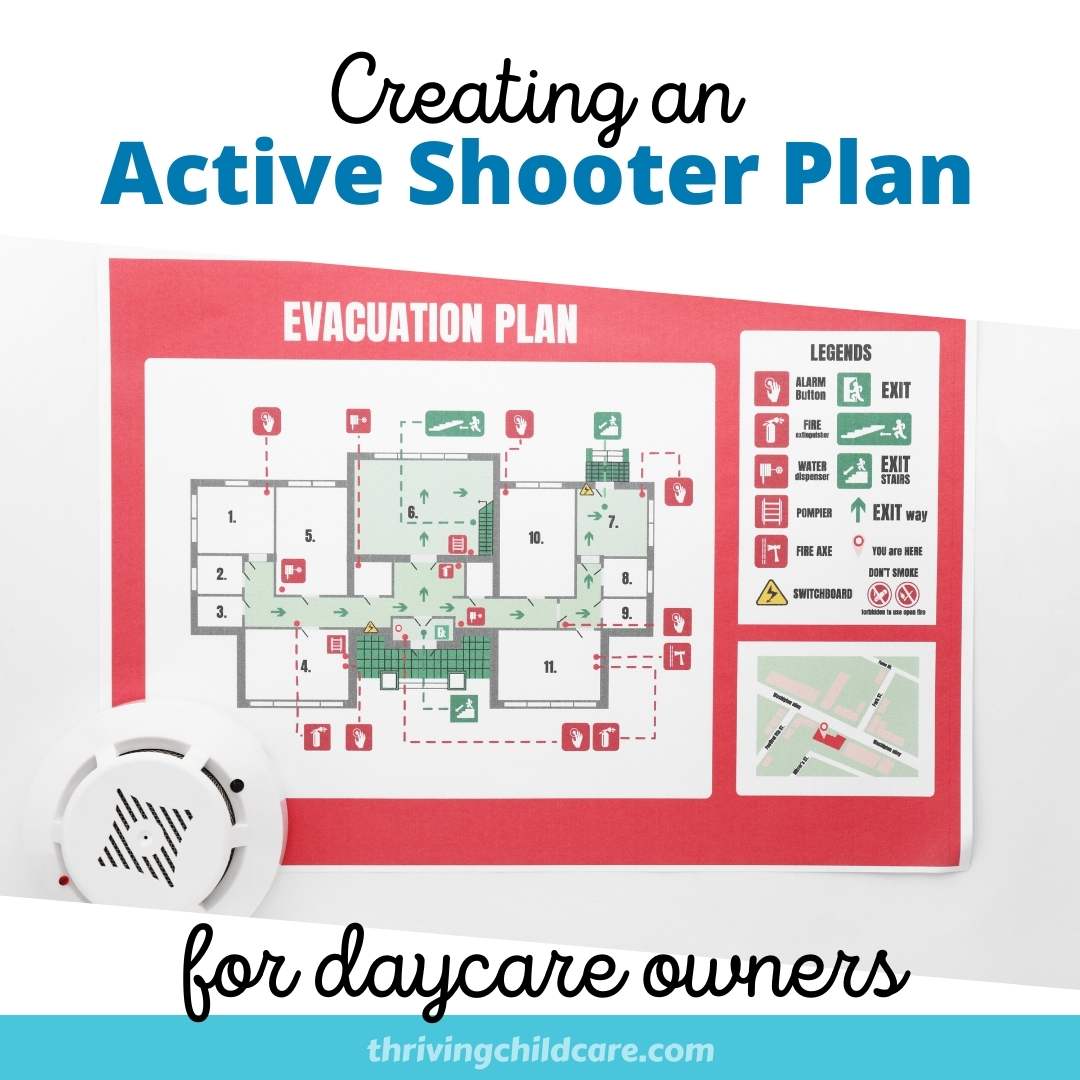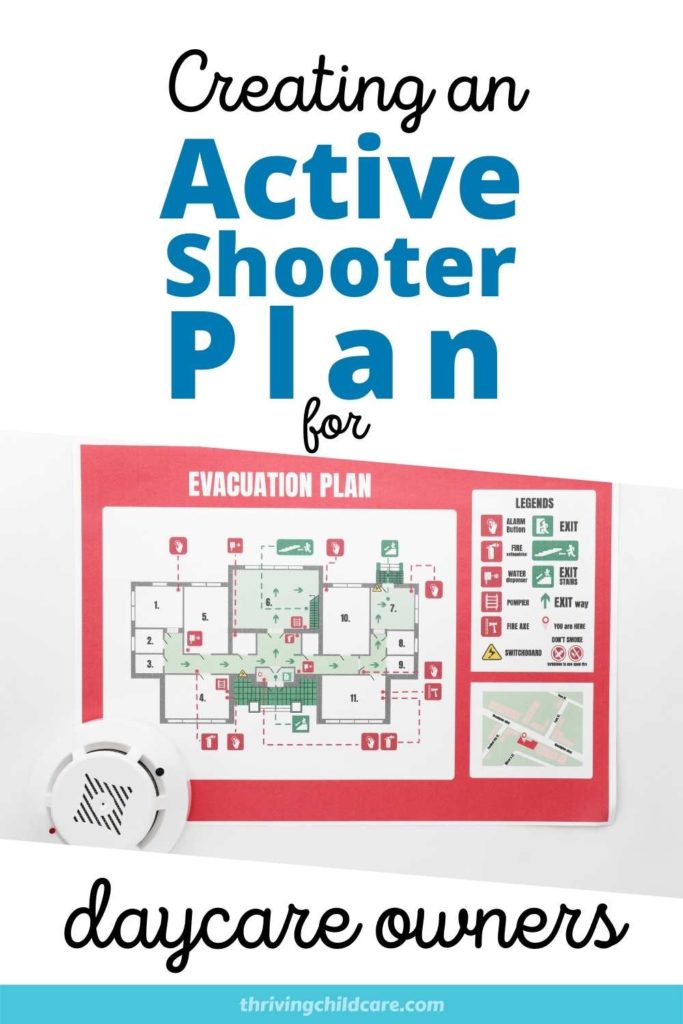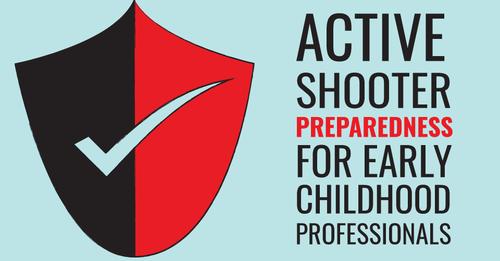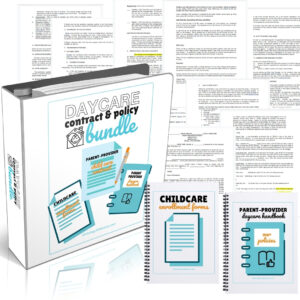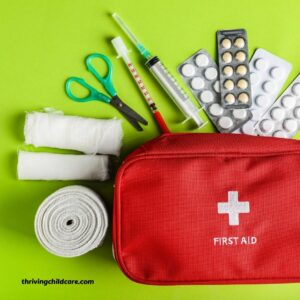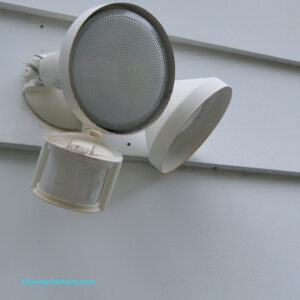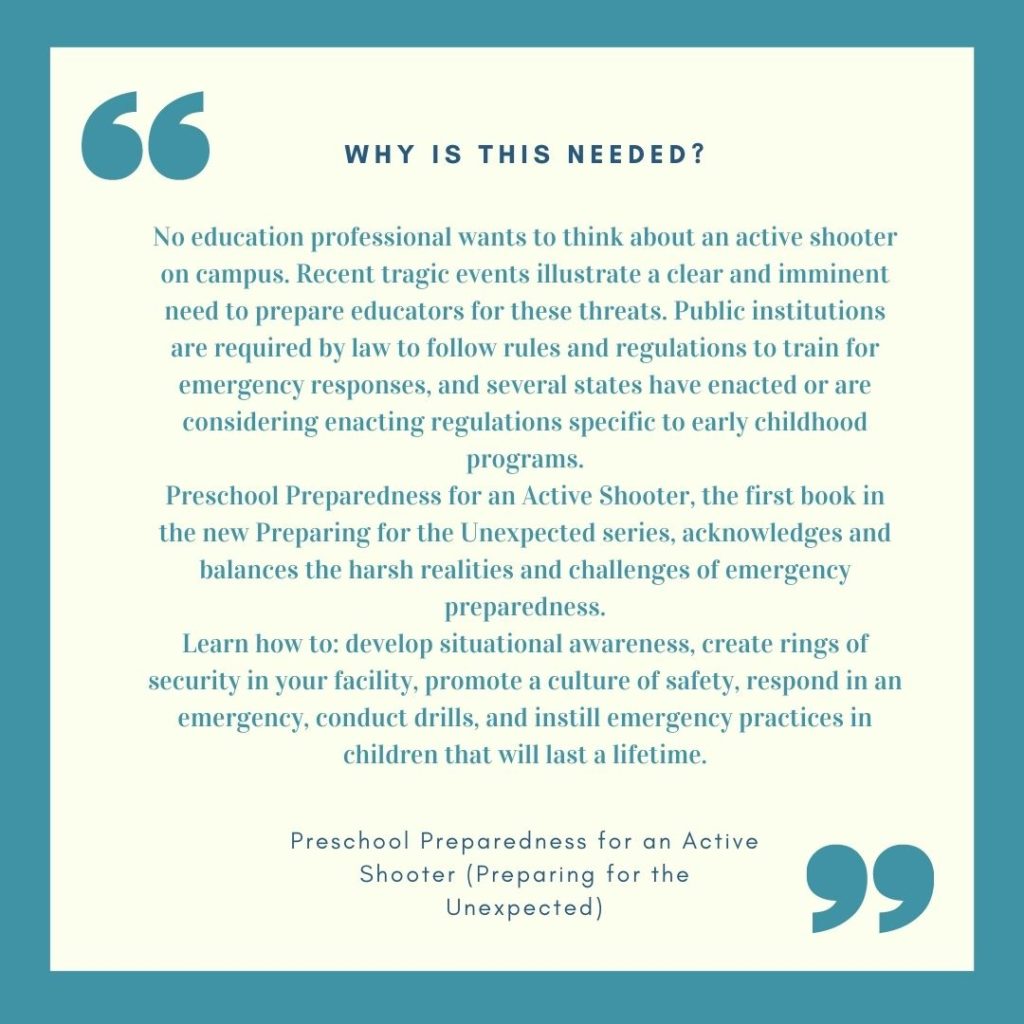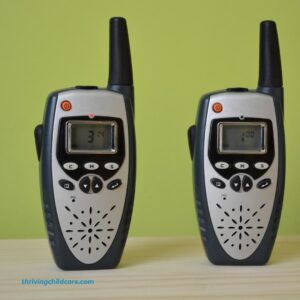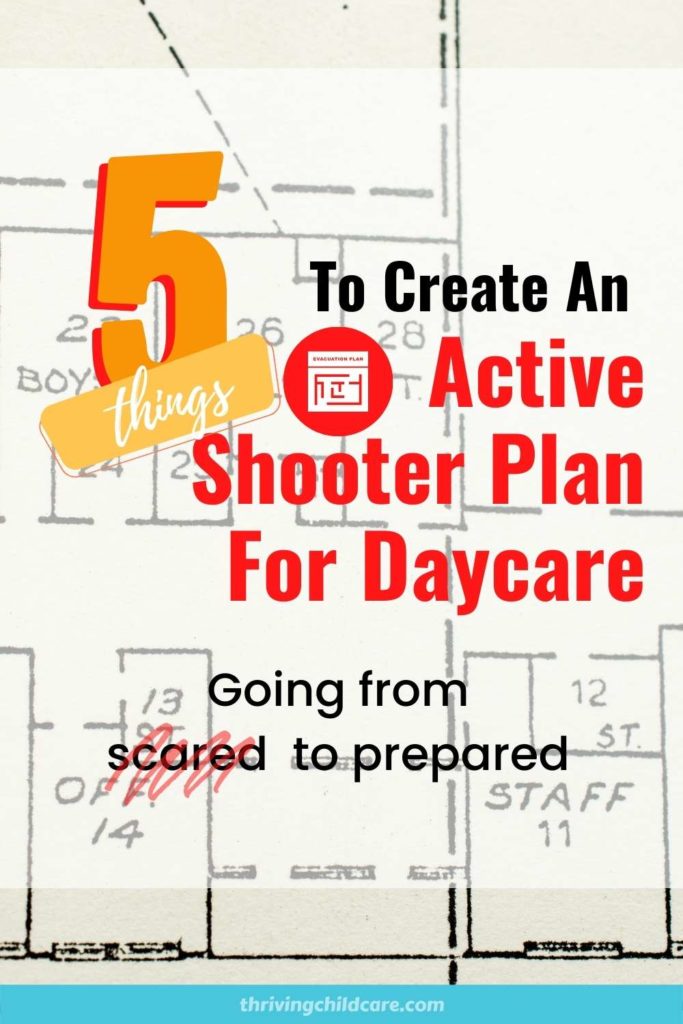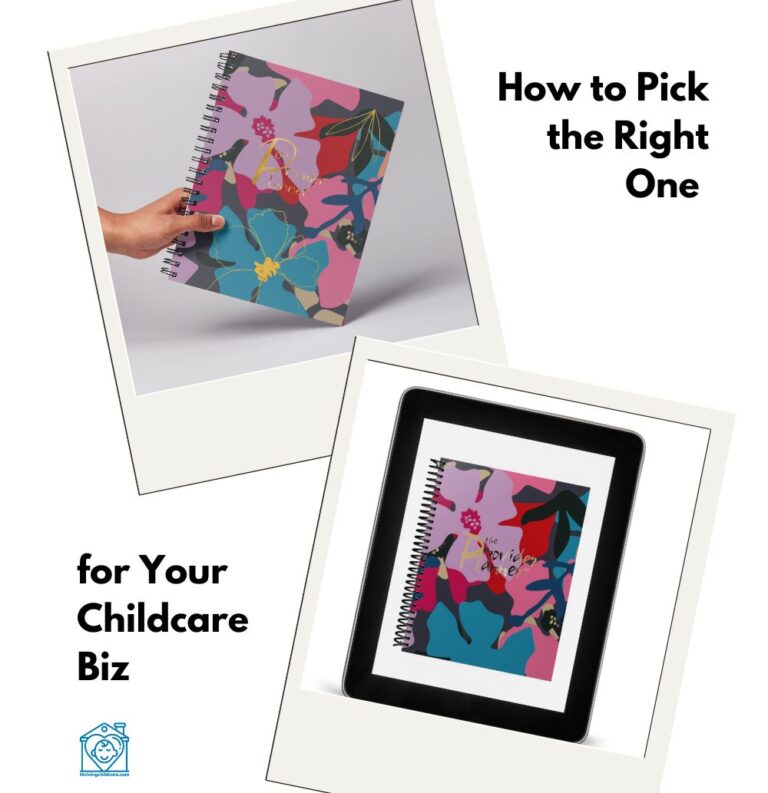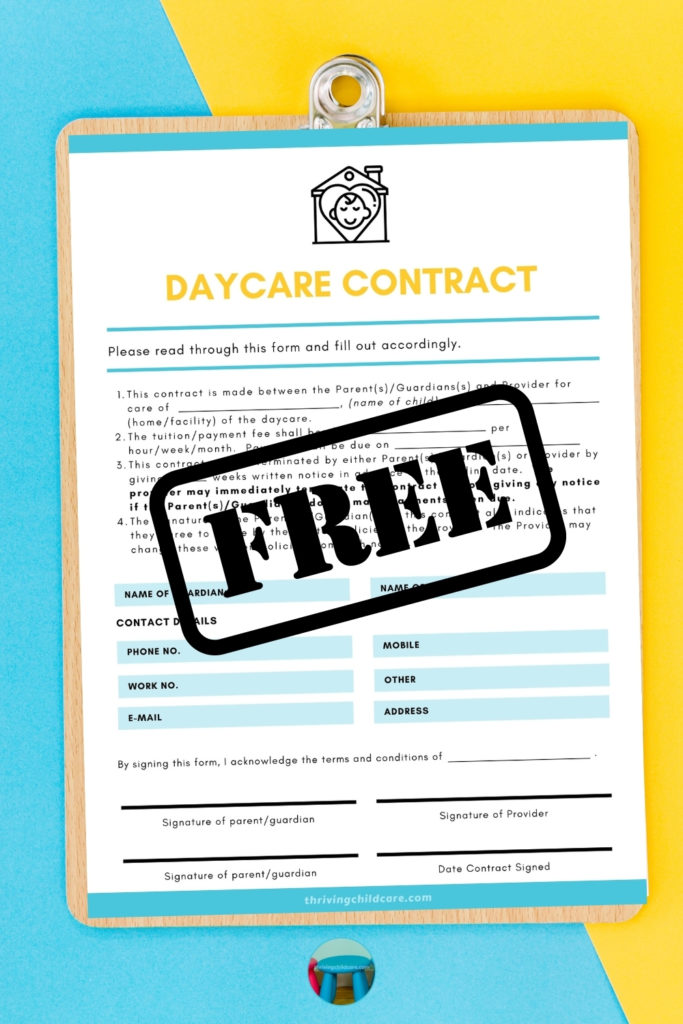Unfortunately, we now have to plan and prepare for the unthinkable. Just like the fire drills we are accustomed to doing, we now need to add active shooter preparedness to our safety practices. In this post, we will cover how to create an active shooter plan for daycare settings.
We all know as providers we are tasked with the daily care of the children in our programs. And we realize that along with attending to their needs we must also ensure they remain safe. Usually, we associate that with falls or other minor incidents that could happen around the daycare.
However, with the news of the shooting last month in Uvalde Texas, came a realization that we must also protect the children and our daycares businesses from the threat of an active shooter.
This past weekend, I attended a course on active shooter preparedness for daycare settings. In this post, I will review a lot of the information I learned from the training and how you can create an active shooter plan for daycare.
Active Shooter Plan For Daycare
The Active shooter preparedness training I attended was instructed by Andrew Roszak and Ron Roszak of the childhoodpreparedness.org. Presented by these experts in the field, this training was quite comprehensive, informative, and as they put it helpful for both our professional and personal life.
It was pointed out that although the Uvalde shooting was just recently in the news, there have been several other shootings that have occurred at daycare sites across the nation. And since the Texas shooting, mass shootings have occurred in the United States just about daily. A total of 28 at the time of this posting.
Active Shooter Preparedness for Early Childhood Professionals $10 Course
With that in mind, just like with the fire, earthquake, and disaster drills we routinely perform, adding active shooter preparedness is needed.
“Mass shootings typically happen after school breaks – Summer, Spring, Winter, etc.”
= Childhood Preparedness Organization
Being prepared means being trained. Because while being untrained can cause people to freeze in the moment, feel overwhelmed, and helpless – being trained allows a person to recall info and be prepared to act.
However, unlike the other drills we perform, active shooter drills should not be unannounced. The reason is you would not want a drill to be mistaken for an actual event. Which could inflict undue panic & stress for anyone unaware, not to mention lead to possible legal ramifications.
Related Reading:

So to avoid confusion, they recommend the following rules for active shooter drill planning:
- Drills should only be performed by adult staff
- Should be careful not to be scary to the children
- You should make parents aware of when the training is scheduled
- Like fire drills, practice your active shooter drills monthly
Additionally, they suggest coming up with “non-scary” messaging to call your active shooter drills. Here are some suggested names and inspiration:
- Intruder on campus
- Bear in the hallway
- Cat and mouse drill
- Bad person drill
- Bees to a Beehive
- The Quiet Drill
- Uninvited guest
*Click here for FREE resources like the Bees To A Beehive downloadable handout
Active Shooter Plan For Daycare

Although they suggest making parents aware that an active shooter drill is scheduled, they do not advise making parents aware of all the details of the drill. The reason is it could make your daycare vulnerable should there be a domestic/custody or other dispute with a parent.
Additionally, now may be a good time to rethink what you post on social media. With the capabilities of online search engines being able to provide even unlisted address information, try to minimize your exposure by not posting the full names of staff members online.
If you knew this was going to happen tomorrow, what would you want to have?
= Childhood Preparedness Organization
Emergency Kit Additions For Your Active Shooter Plan For Daycare
Should an active shooter emergency occur, you would need to have ways to keep the children calm and quiet. So consider adding the following to your Emergency Kit:
- Glow sticks
- Light up Glow Balls
- Stuffed animals
- Lotion
- Lollipops/Stickers
- Pacifiers
- A family drawing or letter from a parent
- Old cell phones (still able to connect with 911)
- Cellphone charger
- Small First Aid Kit (w/bandages & gauze)
Times have changed! Our top priority is to keep the children in our care safe.
In the training, they spoke about the importance of defending three key environments:
- Outermost Ring
- Middle Ring
- Innermost Ring
Outermost Ring
Defending the outermost ring is done by first understanding the principle of JDLR – “Just doesn’t look right.” In other words, being aware of your surroundings, noticing, and calling attention to things that may seem odd or out of place.
Also, being aware of things that might not be so noticeable like the presence of sex offenders in the area. By checking websites like Megan’s Law or a regional sex offender registry, you can stay aware of a hidden potential threat.
You can also protect your outermost ring by addressing areas such as your parking lot, ensuring dark areas are well lit, and making sure to remove large items or shrubbery that may obstruct sight lines.
Also, advise your parents to follow safe procedures during drop-off and pickup. Encourage them to not leave items like purses in their car or in plain sight, and to lock car doors.
Make sure you and your staff don’t get in the habit of propping open doors but instead insure that outer doors are closed and locked at all times.
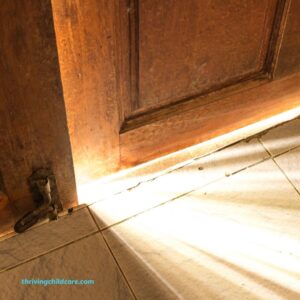
Parents may ask you if you have an Active Shooter Plan For your Daycare
Middle Ring
Just like outer doors, if possible* make sure that interior doors are locked. Another thing to consider is to control access to your daycare facility by –
- Having a specific sign-in and out policy
- Using a Visitor policy (and log)
- Cameras (very important)
Additionally, as mentioned before, be sure to keep divorce/custody orders up-to-date. You might want to consider adding that requirement to your contract or parent handbook.
Another way you can protect your interior is by obstructing the view of areas inside the facility where the children are. Cover windows with two-way mirror film, or make covers from construction paper, or felt.
It is better to be prepared than scared.
Innermost Ring
If possible*, install interior door locks that lock from the inside. Be sure to check with your local fire marshal for updated rules and mandates for door locks related to active shooter preparedness.
Have a Hard Cover, which refers to a designated hiding place in every room. And consider adding cameras in rooms as well.
*Check current standards and mandates with your licensing agency and/or fire marshal.
Communication
Remember, that communication is a very important part of your active shooter preparedness plan. You will want to have several ways for in-house communication. This will encourage timely communication in the event of an emergency. Consider:
- Using walkie/talkies, intercom system, or Echo device
- Allowing staff to retain their cellphone while working and encouraging staff to exchange numbers
- Portable radio for each staff member
Of course, with any of these devices, be sure that staff members are aware of them and know how to use them.

Notifying Law Enforcement
The best way to notify law enforcement about an active shooter emergency is by calling 911 from a landline, which will automatically give them information about your location. However, just in case a cellphone needs to be used, make sure the specific address information of the daycare is posted in every room.
It is important to note that A.I. support devices like the Amazon Echo can not call 911 unless they are integrated with a landline.
Also, the best practice is to make sure EVERYONE is authorized to call 911 in the event of an emergency.
Consider adding active shooter training to your onboarding process.
Run – Hide – Fight
childhoodpreparedness.org advises that your Active Shooter Plan for Daycare has these components:
- Run – Escape & Evade
- Advise the children to stay low & quiet
- Pre-plan different escapes by changing evacuation routes during fire drills
- Hide – Barricade & Deny
- Deny entry (visibility) by covering windows
- Make spaces look unoccupied
- Think – What can you use to barricade the room?
- Fight – Survive & Defend
- Use what you have
- Fire Extinguisher/Wasp or Bear Spray to blind and disable the intruder, make the floor slippery, provide a smoke cover for your escape, and as a weapon
- Think – What can you use to defend yourself?
- Bag of wooden blocks
- Heavy chair
- Use what you have
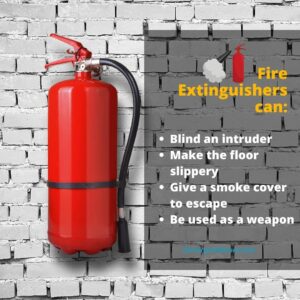
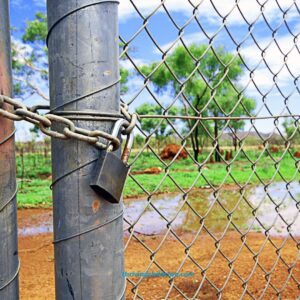
Remember, preplanning is key!
Outside Escape Plan
During drills, make sure everyone knows where gates are and how to unlock them.
childhoodpreparedness.org suggests removing any items from the outdoor surrounding area that could be used to jump a fence and gain entry. Also, consider using opaque gate screens to conceal outdoor play areas.
Active Shooter Plan For Daycare
As distressing as it is, the need for creating an active shooter plan for your daycare unfortunately has become undeniable. But instead of being scared, we must stay prepared to protect our daycare businesses and the children we love and care for each day from the unthinkable.

I want to thank the childhoodpreparedness.org for presenting the Active shooter preparedness training and doing this important work so that daycare owners can create their own active shooter plan for daycare. Please go to childhoodpreparedness.org to get more information or training and additional resources on this important topic.

